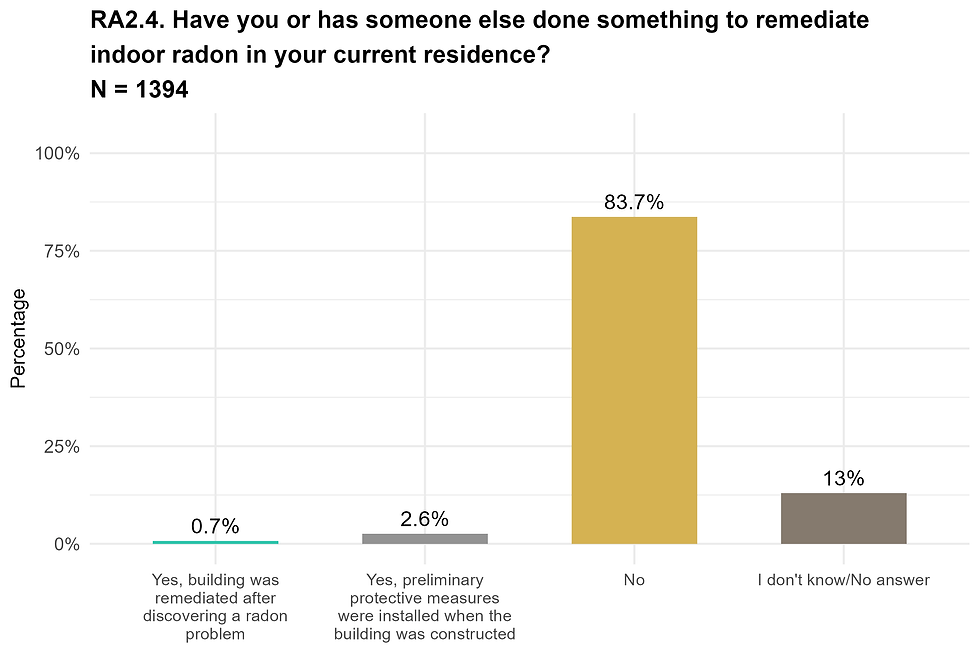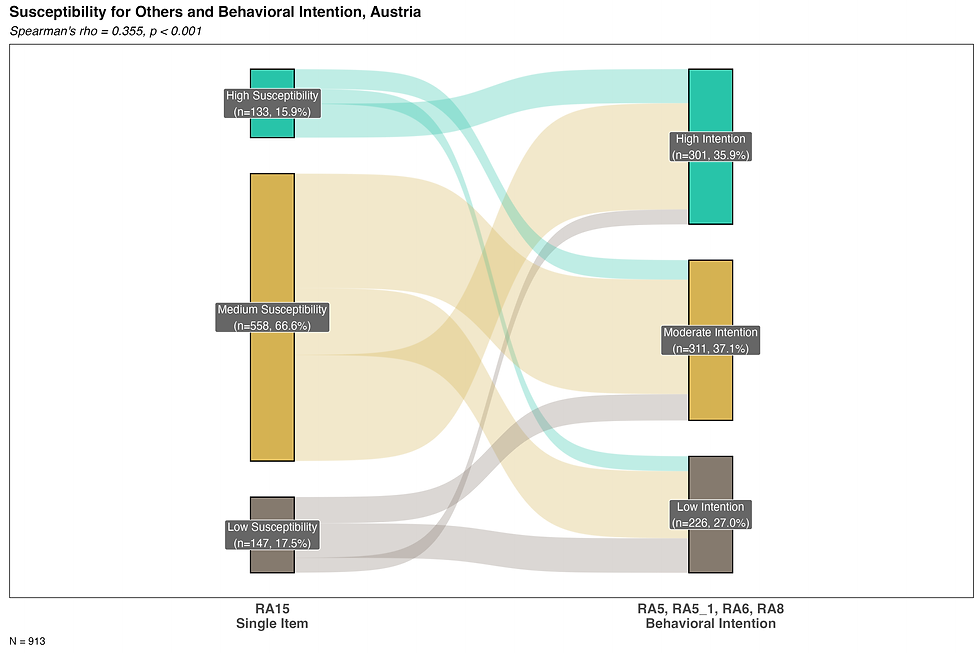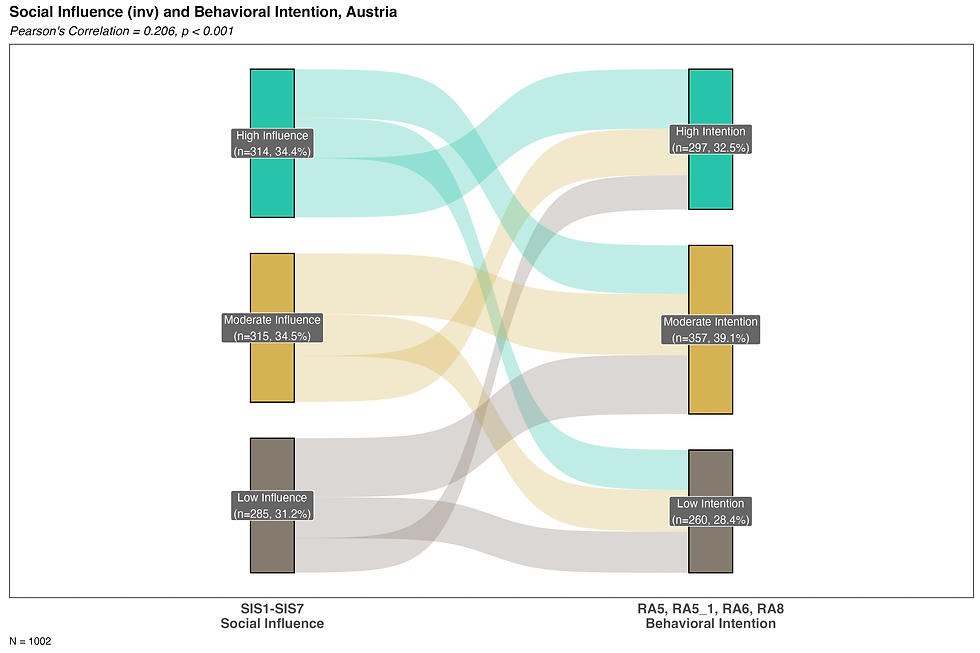
Findings for
Austria
Cite as:
Perko T. (2025): RadoNorm European Radon Behavioural Atlas: Austria, H2020 project RadoNorm, No 900009 https://www.radonorm.eu/
Methodology
The study employed Computer-Assisted Web Interviewing (CAWI) to survey a representative sample of the Austrian population. Prior to the main data collection, the questionnaire was pilot tested in the Walloon region of Belgium (N = 300), followed by a soft launch (N = 51). Respondents were randomly selected from the KANTAR marketing company’s online panel. The final sample comprised 1,435 individuals aged 18 and older, stratified by gender, age, and region, based on Austria’s population distribution. The overall response rate was 13%. Among the participants, 59.4% resided in areas classified as low radon risk, 34.1% in medium risk areas, and 6.5% in high risk areas. Interviews were conducted in German between July 7 and August 14, 2023, with an average duration of 22.6 minutes. The field work was sponsored by AGES, data were analysed by SCK CEN, Belgium. Data are available at: [DOI:10.20348/STOREDB/1179/1297]
Download the questionnaire PDF here.
Download the technical report PDF here.
Results
Radon protection behaviour
Do people in Austria test and mitigate?




Personal attachment
How strongly do Austrians feel attached to their homes?

Intention to protect from radon
What is the public willingness to adopt radon protection measures in Austria?

Radon Knowledge
How much people in Austria know about radon?


Risk perception
How do people in Austria perceive radiological, radon and other risks?

Confidence in authorities for risk management
To what extent do Austrians have confidence in their authorities' ability to manage risks?

Trustworthiness of radon stakeholders
Who in Austria is recognized as a trustworthy source of information about radon risks?

Competence of radon stakeholders
Which stakeholders involved in radon mitigation in Austria are recognized as technically competent?


Perceived behavioural control: financial and other burden and ease
Is radon testing and mitigation perceived as a financial or other burden?




Aesthetic impact of remediation works on a dwelling
Do residents believe that radon mitigation would visually harm their homes?

Anticipated emotions
What emotions do Austrians anticipate feeling if they do not take action against high indoor radon levels?

Moral norms
To what extent do Austrians believe it is their moral duty to protect themselves and others from radon exposure?

Moral values
To what extent do people agree with statements reflecting moral values?

Health effect perception
Do individuals have acquaintances who may have experienced health issues as a result of radon exposure?

Economic impact of radon on a property value
Does a radon problem in a building negatively impact its financial value?

Descriptive norms
Is radon testing and mitigation a common practice within social groups?

Information uncertainty
Is there too much uncertainty to make informed decisions?

Information processing
How do people process information about radon?


Information comprehensiveness
Is there enough information readily accessible?

Preference for post-survey radon related information
Which communication channels are recommended for radon-related communication?

Radon spa
Note: For information on attitudes towards radon spas, please see the 'Intercomparison of Countries' tab.
Radon awareness


Personal attachment

Risk perception


Confidence in authorities for risk management


Severity


Susceptibility


Response efficacy: remediation


Self efficacy



Perceived behavioural control: financial and other burden and ease



Perceived cost



Aesthetic impact of remediation works on a dwelling

Economic impact of radon on a property value

Subjective norms

Descriptive norms

Moral norms

Moral values

Social influence

Health effect perception

Stigma

Information processing



Information comprehensiveness

Information uncertainty

Affective response to information

Anticipated emotion

Relationship Between Radon Awareness and Behavioural Intention to Act on Radon Risk






